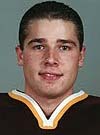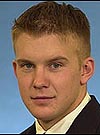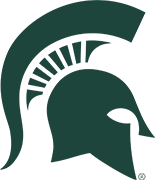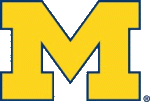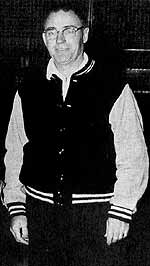The ECAC is not known for its radical change. And, the only known agenda item heading into the recent athletic director meetings, was an ECAC tournament expansion proposal that generated a lot of negative feedback.
So the final result — an approved increase in the games limit, a shift to a second postseason expansion proposal, and an administrative re-organization — came as a surprise to many. Judging from initial reaction, however, it was a pleasant surprise.
The expansion of the tournament to include all 12 teams received the most attention, because it came first. However, the approval of an increase in the regular-season games limit, from 32 to the NCAA maximum of 34, was surely the most significant.
Going forward
No coach was ever going to be against a 34-game season, but if it were that easy, the increase would have happened years ago. Getting the approval always faced a number of obstacles that didn’t seem close to changing, most notably the Ivy League’s unwillingness to approve a 34-game season while their schools were still stuck at 29.
For whatever reason, however, coaches felt the time was ripe for a change, and pushed for it coming into the AD meetings. It started with them all being on the same page — the Ivy League coaches would go along with the increase, knowing full well that their own administrations would not allow anything more than their current 29-game limit.
They went along even though the league-wide increase creates a five-game gap (34-29), putting the Ivy League teams at more of a relative in-conference disadvantage.
“The coaches understand … [it’s] for the good of the league and the good of college hockey,” said Yale coach Tim Taylor. “We can be as competitive and as good as any league. We don’t want the limited games to hinder us, despite the battles we have to fight on the Ivy front.”
With the coaches on board, the athletic directors also saw the wisdom of the change, and approved it unanimously.
All of a sudden, it looked so easy.
“There’s always evolutions,” said Clarkson athletic director Geoff Brown. “Athletic directors change, so do [school] presidents.”
Perhaps having just one team in this past NCAA tournament frightened ECAC people into action.
“In the past, when there was a sense of crisis — such as when RPI threatened to leave the league — it served as a wakeup call,” said former ECAC and current Hockey East commissioner Joe Bertagna. “There’s been a sense of slippage lately. I know the coaches are very concerned.
“The Ivies recognize that, even though it might help the others more than them, it will also raise the whole ship.”
Princeton associate athletic director Jim Fiore said, despite the wider disparity in games, the ADs all listened to the coaches and saw the time was right to approve the increase.
“The coaches feel strongly that, the stronger the league, the better it is for all teams,” Fiore said. “We’re so restrictive in the Ivy League for a myriad of reasons. It’s time away from academics [for example].
“[But Princeton coach] Lenny [Quesnelle] figured that if the Clarksons, the Colgates the St. Lawrences can go out and play Michigan and Ohio State and schools from the WCHA, that will help their RPI (Ratings Percentage Index) so that when we play them, it will help us. It’s something the coaches really pushed for.”
There has been some talk that the Ivy League could approve a 30th game, by changing the allowance for what is now an exhibition game, into a regular-season contest.
“At Princeton, we tend to worry about Princeton first,” said Fiore. “We don’t have any illusions of grandeur to expand. The faculty is opposed to any kind of expansion.”
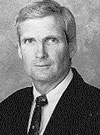
Tim Taylor
Said Taylor, “Ivy hockey always cued itself off basketball. They played 26 games, so that’s where hockey was. Basketball across the country doesn’t start until November 1, so that seemed like a good time to start. This goes back to the ’60s. So gradually we expanded under the Ivy umbrella. But we’re still operating under [many of] those restrictions.”
The change still faces approval by the “Policy Committee,” an oversight committee put in place by school presidents to deal with any change that would affect class time. That committee held a conference call today.
Brown expects their approval.
“Quite frankly, the decision seldom has been Ivy/non-Ivy,” he said. “Typically it’s not that way. Certainly there are those members of the Ivy league that have historically voted against expansion.
“All of the members of the league appreciate the limitations of all of the schools. We try not to take advantage of the circumstance. [Clarkson] could schedule 6-8 games before league play, which would be a significant advantage. But we don’t do that. And we try to pair up — Ivies play Ivies — for the first weekend.”
Bertagna, who enjoys a unique perspective on ECAC happenings — with a long-time affiliation as a player, administrator, and friend to many league coaches — said the ECAC has gotten into a particularly precarious spot in recent years.
“Before, when it was four leagues, we were compared to each other. We were all in the same basket,” Bertagna said, noting how reality can sometimes follow perception. “Now that there’s these other two leagues [MAAC and CHA], there creates a new possibility to be compared in that direction. So [the ECAC] wants to do something before someone starts lumping them with these new teams, which would be not fair.
“We [Hockey East] play so many games against the ECAC, we have an interest in their RPI being high. We play more games against them than anyone else. So, in a strange way, it’s in our interest too.”
The Road to Lake Placid
Also highly notable was the ECAC’s decision to expand its postseason tournament to include all 12 teams. The initial proposal — which was the same idea the CCHA approved in April — would have seen six first-round best-of-three series, with the winners advancing to a Final Six to be played in Lake Placid.
The idea, which came out of the coaches’ meetings in Naples, was met with philosophical resistance by the large majority of fans. Once the ECAC ADs met, the proposal also faced some logistical concerns.
Late in the AD’s meetings, a new idea was put forth that would expand the league’s playoffs by a week, giving the 1-4 seeds a bye while 5-12 played a first-round best-of-three series. Those winners would proceed to a quarterfinal series against the top four teams, with the winners meeting in a more traditional final four scenario at Lake Placid.
“It came from several sources, and we immediately saw the benefit of it,” Brown said.
Both proposals are still officially being studied by the league office, but the 3-weekend scenario seems to have more steam.
“I think that, as we looked at the 12-team format, the concept of having six teams go to the final weekend was problematic,” said Brown. “Issues with hotels and all of those things. So we were looking for a way to involve more of our student-athletes and more teams, but the tradeoffs were more administration and more hotel [needs].”
While this no longer directly addresses the desire to assist the top teams into making the NCAA tournament, nor provide more Lake Placid opportunities to the student-athletes, those were dubious goals to begin with. And, given the desire to allow all 12 teams in, the newly-proposed structure appears much more palatable.
“There are very complex formulas that, depending on the year, might suggest that having all 12 teams in [the playoffs] might benefit you in national picture,” said Brown. “But that’s so complex, you can’t always know.
“We’re looking to do what’s right for our league, to change the format to include more teams, and to try to structure our final weekend in a way that’s easier to understand for fans and is still rewarding.”
Scheduling and the Beanpot
It is interesting that, at a time when the league will be gaining two games, it may also lose a week of its season to extra playoffs. The extra games were going to be alleviated by an extra week added to the schedule starting in 2002-03, when the NCAA tournament gets pushed back a week. But the additional week of playoffs eliminated that week again.
In particular, this affects the Harvard Beanpot situation.
ECAC coaches and ADs approved on philosophical grounds the idea of giving Harvard a break on the weekends prior to the Beanpot games, which are played annually on successive Mondays in February. The breaks would include playing only one league game on the previous Friday, and/or playing two home league games on the previous Thursday-Friday.
The philosophy remains intact, but the logistics are now the biggest problem. The ECAC, therefore, will have to get creative.
Bertagna, who was a goalie at Harvard and played under outgoing athletic director Bill Cleary, thinks that, in the past, some of the Crimson philosophies may have hindered progress in this area.
There is a spirit of cooperation now, however, that seems to ensure that these matters will get taken care of.
“When Ronn [Tomassoni] was coach and Billy was AD, maybe Harvard was not getting help because they were not pulling their weight marketing the league,” Bertagna said. “Billy was not one for image things. But it was one more thing that made them different than the other leagues.
“Certain things never change. There’s always going to be people who say things like, ‘If you’re that smart, you can’t be that good.’ But when you make decisions that make you different, that’s something you have control of.”
Re-organization
Finally, in a move that cannot be overlooked, the ECAC athletic directors agreed to increase their respective school’s annual financial assistance to the league, with the money to be specifically earmarked for the hiring of an additional administrator. That person will focus on non-Division I men’s matters, freeing assistant commissioner Steve Hagwell to focus all of his efforts on Division I men’s hockey.
“He’s very good, and a good guy,” said Bertagna of Hagwell. “I think it’s good for the league.”
For the first time, the ECAC will have an administrator in charge of Men’s Division I hockey only.
“As we looked at our day-to-day circumstances, there are little issues that come up all the time,” said Brown. “When a person like Steve was trying to balance D-III hockey and D-I hockey, even though the lion’s share went to D-I, the coaches felt the circumstance [needed more attention].”
ECAC administrators have always had to deal with the Division III and Women’s side of things, but the situation has become more acute. Just in the last few years, there has been a lot of re-organization on the Division III men’s side, and this year, the ECAC will add a second women’s league.
There are 32 D-III men’s programs in the ECAC East, West and Northeast for 2001-2002, in addition to 18 programs in the NESCAC and SUNYAC for which the ECAC supplies officials and keeps statistics. That means the ECAC has jurisdiction over 50 of the 73 teams in men’s D-II/III. There are 20 total women’s programs to deal with, and counting.
When you consider all of that, the urgency to make this organizational change becomes even more apparent.
“When we looked at Steve’s job description, he was spending some time on non-D-I matters,” Brown said. “All we’ve basically done is to say, we’re going to increase our ante, allowing him to give 100 percent of his time to D-I. It’s seen as a way to upgrade our league image.”

